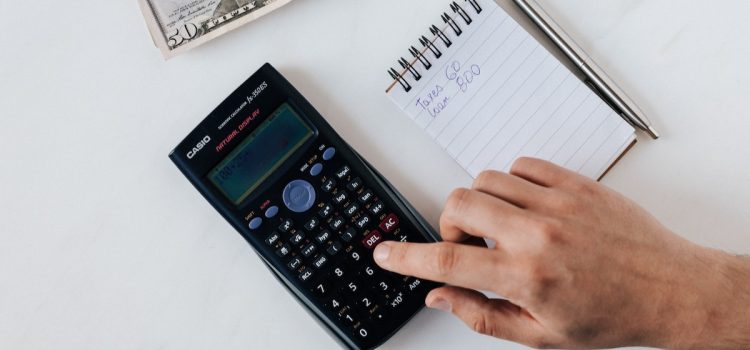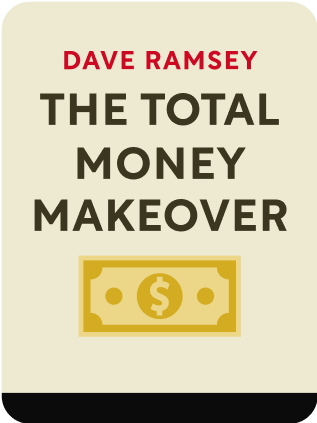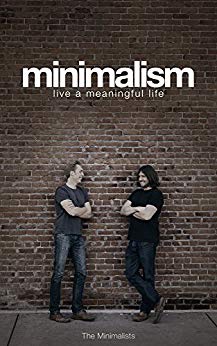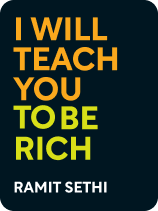

This article gives you a glimpse of what you can learn with Shortform. Shortform has the world’s best guides to 1000+ nonfiction books, plus other resources to help you accelerate your learning.
Want to learn faster and get smarter? Sign up for a free trial here .
Do you know how much money you’re actually spending? Or does your end-of-the-month bank balance come as a surprise? Why is it important to budget your expenses?
Many people don’t budget their expenses: They just spend whatever is left after all their essential bills (e.g. rent and utilities) have been paid off. This is because creating a budgeting strategy that works for you is time-consuming, work-intensive, and complicated.
Here are several budgeting strategies so you can either choose one that works for you or use them as an inspiration to create your own.
The Importance of Budgeting
Most people are guilty of having no idea where their money goes or how much they’re spending on different things. As a result, they constantly feel guilty about spending money because they don’t actually know how much money they have to spend. So, each purchase could mean a nasty surprise on that month’s credit card bill.
To prevent that from happening, you should get into the habit of budgeting your expenses in advance. However, there’s no one-size-fits-all budgeting strategy. You should choose a strategy that works for your income, financial goals, lifestyle, and personality.
Here are four budgeting strategies to help you take control of your money.
1. The Barefoot Investor Bucket Strategy
The first budgeting strategy we’ll discuss is the bucket method proposed by Scott Pape in his book The Barefoot Investor. This strategy is geared towards paying off your debt and growing your wealth at a slow yet steady pace. Under this strategy, you’ll first create five bank accounts, each for a distinct purpose:
- Day-to-Day: basic expenses
- Treat: nonessentials that you enjoy
- Happy: long-term purchases that take time to save for
- Fire: pressing needs, like paying off debt or saving for a home
- Backstop: in case of emergency
Then, you’ll divide your monthly take-home pay into three categories or “buckets” and direct the money to the corresponding account.
The Blow Bucket (General Spending Money)
This category consists of money that you’ll spend on a daily basis, as well as savings you’ll put away for longer-term purchases. Each month, your take-home pay will be deposited in your Day-to-Day account. Then, you’ll redirect some of it into your other accounts.
In general, aim to spend only 60 percent of your take-home pay on essentials, like bills, shelter, food, transportation, and insurance. This will leave you 40 percent to put toward other purposes.
Here’s how it’ll work—each time you’re paid, have your Day-to-Day account automatically direct:
- 10 percent to your Treat account.
- 10 percent to your Happy account.
- 20 percent to your Fire account.
10 Percent: Treat Account
You’ll use your Treat account for treating yourself regularly to whatever you like to buy. Maybe it’s pumpkin spice lattes, or new clothes.
Since it’s a debit account, it comes with its own card. Write Treat on it with a Sharpie so that you can tell it apart from your Day-to-Day spending card. Once you’ve used up your Treat dollars for the month, you’re not allowed to dip into other accounts for that purpose. You’ll have to wait until next month.
10 Percent: Happy Account
The money directed to your Happy account (a savings account) allows you to save for bigger expenses that you can’t buy with one paycheck, like a vacation. In other words, you’re saving to make a larger-than-normal purchase that brings happiness to your life.
Depending on what you’re saving for, you may want to increase or decrease the percentage you direct toward this account. For example, if you’re saving for a $1,200 plane ticket to Tokyo, and you want to buy it in three months, you’ll need to put $400 dollars in your Happy account for three months to reach that goal. If you normally only put $300 per month toward this account, you’ll have to modify your other monthly expenses. For example, you could divert a smaller portion of your take-home pay into your Treat account, putting the remainder in your Happy account instead.
20 Percent: Fire Account
You’ll use the money in this account to deal with “financial fires.” Financial fires are anything you want to concentrate a good chunk of money on paying for, such as eliminating credit card debt or student loans. It could also include larger expenses than you’d normally save for in your Happy account, such as a downpayment on a home.
The Grow Bucket (Long-Term Savings)
This category consists of your long-term savings: your money for your super, as well as any investments you own, like rental properties or shares.
The Backstop Bucket (Emergencies)
Backstop is an account that holds money separately from the Blow and Grow category. It is both its own spending category (like Blow and Grow) as well as a separate bank account. Your Backstop money must be at another bank so it should feel mostly off-limits, unless you need it in an emergency, like getting laid off from your job.
2. Dave Ramsey Zero Based Budget
In his book The Total Money Makeover, Dave Ramsey lays out a simple budgeting strategy that is intended for everyone—from high earners to people with thousands of dollars in debt. He calls this strategy Dave Ramsey Zero Based Budget (the template can be downloaded here).
Here are the basic steps to get started:
- Each month, draw up a new budget for the next month. If you’re married, sit down with your spouse to do this. Conflict over money is the No. 1 reason for divorce in the U.S. Often this is due to different personalities and money management styles. The way to prevent conflict is to let differences complement each other and work together each month to establish shared money goals.
- List the month’s bills, savings, and debts, then list and allocate every dollar of your income (think of this as spending the money on paper before the month starts). If you have variable income because of commissions or self-employment, use this budget form.
- Once both partners agree on a budget, pledge not to do anything with your money that isn’t prescribed by the written plan. You can’t get control of your spending without working together. If something unexpected comes up—for instance, your car needs repairs—hold an emergency meeting and together reallocate and balance the categories so that the month’s income minus expenses still equals zero.
3. Minimalist Budget
Joshua Fields Millburn & Ryan Nicodemus (Minimalism) recommend establishing a written monthly budget, following a few guidelines:
- Create categories: Identify what’s truly necessary by identifying all your monthly expenses based on the past six months. Then, divide them into three categories: Need, want, and like.
- Write down every expense: food, housing, cars, insurance, gas, utilities, pets, clothes, phones, internet, and entertainment. Check the list with your significant other or friend.
- Then use the need, want, and like categories to prioritize and cut where you can. The stricter you are the sooner you’ll be free.
- Set boundaries: Assign every dollar at the beginning of the month. You won’t worry about what you can and can’t buy because money that wasn’t assigned to something at the beginning of the month can’t be spent. This is required to keep to your minimalist budget.
- Work as a team: Everyone in the household including children must have a say in the written budget, so you get everyone’s buy-in. You can take from one category to fund another if everyone agrees. With everyone on board, it’s much easier to control your finances.
- Adjust as needed: You’ll have some slip-ups along the way; it’s part of the process. At first, check the minimalist budget daily, then weekly, and adjust as necessary until everyone is comfortable with the allocations. The first month will be the hardest, but soon you’ll be surprised at how much money you used to waste.
- Create an emergency fund: Create a savings account for emergencies ($500 to $1,000 to start with). Don’t use it unless there is a true emergency (car repairs, medical bills, job loss, etc.) This fund will allow you to stay within a minimalist budget when something unexpected happens. It should eventually cover several months of income.
Minimalism
by Joshua Fields Millburn and Ryan Nicodemus
25 min reading time
27.1k reads
audio version available
4. Mindful Spending
For those who don’t like extensive budgeting strategies such as the ones described above, Ramit Sethi (I Will Teach You to Be Rich) recommends practicing mindful spending instead of budgeting. Budgeting involves tracking every dollar you spend, all the time. In contrast, spending mindfully automates this process—you decide in advance what you want to spend in a given area, then set up your system to funnel that money to the right areas automatically. Once your system is up and running, you no longer have to worry about tracking where each dollar goes, and you’ll only have to revisit the system about once a year to make sure it still aligns with your goals.
Spending mindfully is also not the same thing as just being “cheap.” Cheap people are so fixated on cost that they ignore value. They obsess over saving money for its own sake, whereas mindful spenders recognize that money is just a tool that’s meant to help you build a rich life. Plus, mindful spenders make money decisions that only affect themselves, whereas cheap people often save money at the expense of other people (like by shorting a waiter on a tip).
In practice, spending mindfully means planning your spending in advance. That way, you’ll not only be confident that you’re contributing enough to your savings and investment goals, but you’ll know that any money left over is yours to spend however you want—with zero guilt. Spending mindfully lets you spend extravagantly on the things you love without worrying if you can really afford it (or judging yourself for not saving or investing that money instead).
This approach is all about using your money to create your version of a rich life. For some people, that means going out four times a week; for others, it might mean having a fancy car, traveling often, or founding a nonprofit. Spending mindfully means making your money work for you and your specific goals.
This means that spending mindfully looks different for everyone. For example, Sethi has a friend who spends $21,000 per year partying—but who also maxes out his 401(k) contribution, hits his investment goals, and saves money by living in a small, bare apartment and never taking vacations. His solid financial foundation means he can afford to spend extravagantly on what he truly loves, guilt-free, because he knows he’s still being responsible with his money.
Final Words
Budgeting is one of the most important financial habits you can develop, especially in our culture of instant gratification. Many people spend money to their heart’s content, without much regard for how their purchases take them further and further away from their long-term security. If you’re serious about taking control of your finances, you must create a budgeting strategy determining where your money will go—otherwise, it will just disappear without you thinking about it.
If you enjoyed our article about budgeting strategies, check out the following suggestions for further reading:
Most of us assume financial success depends on education and intelligence. But in The Psychology of Money, finance expert Morgan Housel presents an alternate hypothesis: The key to financial success lies in understanding human behavior. Housel posits that when you understand how emotions and beliefs influence your financial decisions, you’ll make better financial decisions.
The Automatic Millionaire provides a simple but powerful action plan for you to quickly automate your finances, build your wealth, and achieve financial freedom. David Bach argues that, with just a few dollars a day, you can immediately benefit from this book’s advice and grow your finances.

Want to fast-track your learning? With Shortform, you’ll gain insights you won't find anywhere else .
Here's what you’ll get when you sign up for Shortform :
- Complicated ideas explained in simple and concise ways
- Smart analysis that connects what you’re reading to other key concepts
- Writing with zero fluff because we know how important your time is










